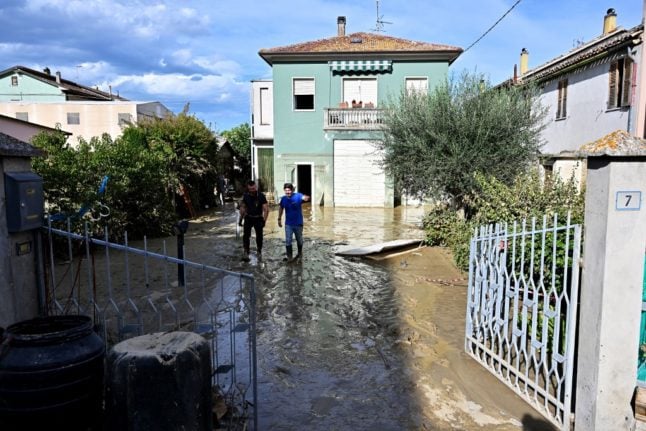“Search operations for the last two missing people continue,” confirmed firefighters in Ancona on Monday afternoon, more than three days after flash floods devastated the area.
Local media reports said the two were an eight-year-old boy and a 56-year-old woman.
They were named by Italian press as Mattia, the boy who was swept away from his mother by fast-flowing waters, and Brunella Chiù, whose 17-year-old daughter was among the confirmed victims of the disaster.
Flash flooding in the Ancona area was triggered by storms late on Thursday night, with more than 400 millimetres (16 inches) of rain falling in some places in just a few hours.
IN PHOTOS: Devastation after deadly flash floods hit central Italy
Across the province, which is in the central eastern Marche region, streets were turned into rivers, cars swept away, furniture washed out of homes and thick mud left everywhere.

As Marche residents mourned the victims and assessed the damage, there was rising anger directed at political leaders ahead of elections on September 25th.
READ ALSO: Italy records ‘five times’ more extreme weather events in ten years
While Prime Minister Mario Draghi acknowledged on Friday that the flooding was the result of climate change, major parties have said little on the topic during campaigning ahead of the vote.



 Please whitelist us to continue reading.
Please whitelist us to continue reading.
Member comments